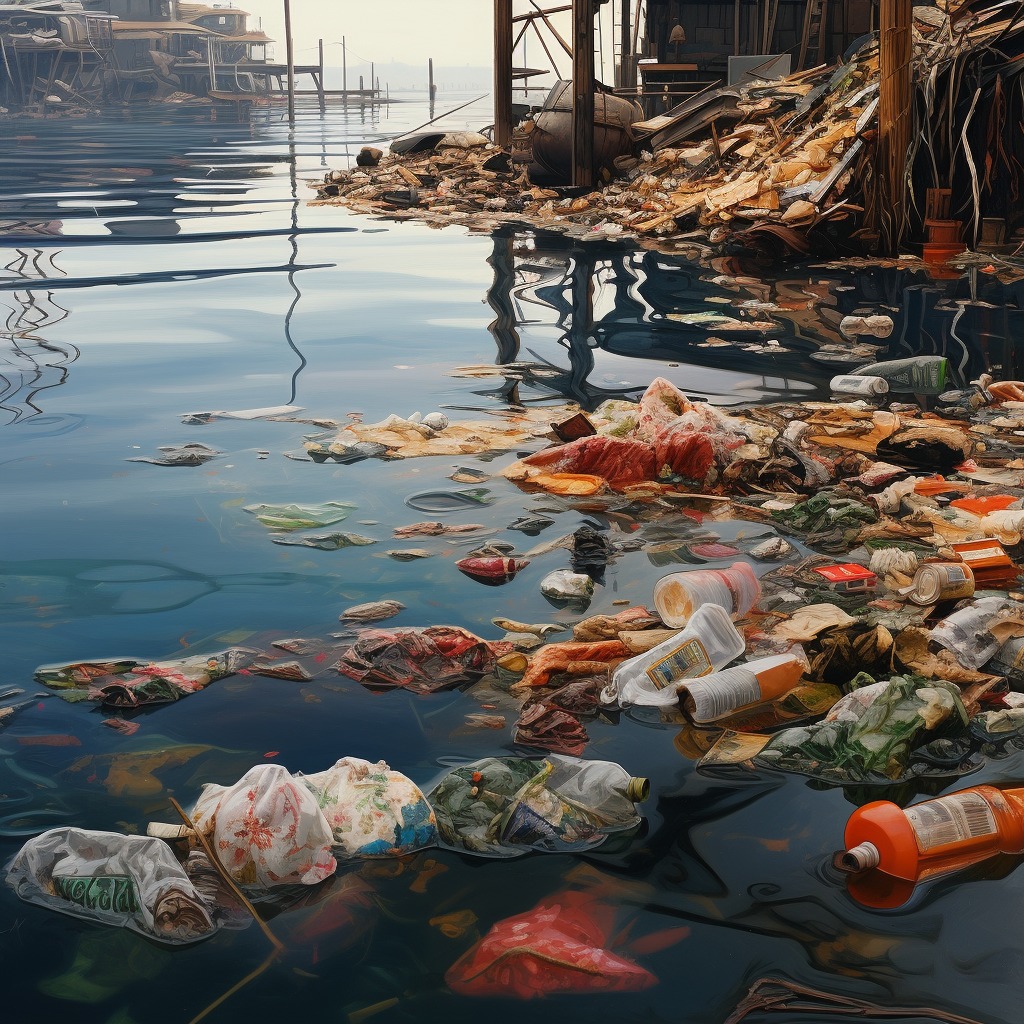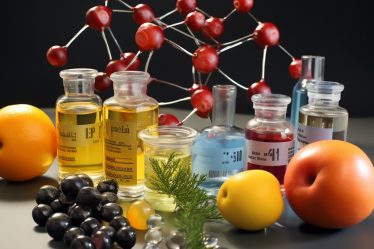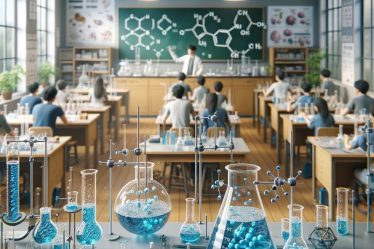
Welcome to this comprehensive guide on the chemistry of water pollution. Understanding the science behind this pressing environmental issue is not just for scientists and policymakers; it’s crucial for everyone. Why? Because water is life, and its pollution affects us all, from the water we drink to the ecosystems we rely upon.
Chemistry plays a pivotal role in both causing and solving the problem of water pollution. By diving into the chemical reactions in polluted waters, we can better understand how to mitigate its harmful effects. Whether you’re a student, a concerned citizen, or someone considering chemistry tutoring, this guide aims to offer valuable insights.
Here’s a glimpse of what you’ll learn:
- The basics of water pollution
- The chemistry behind common pollutants
- Effects on ecosystems and human health
- Mitigation strategies
Want to expand your chemistry horizons? Our World of Chemistry offers a plethora of free educational blogs.
Discover your ideal chemistry tutor at meet’n’learn and skyrocket your understanding to new heights!
The Basics of Water Pollution and The Chemistry Behind It
When we talk about water pollution, we’re referring to the contamination of water bodies such as rivers, lakes, oceans, and groundwater. Various pollutants, including chemicals, pathogens, and physical waste, can cause this contamination.
Water pollution can be categorized into three main types:
- Chemical Pollution: Involves pollutants like heavy metals, pesticides, and pharmaceuticals.
- Biological Pollution: Includes organic waste, bacteria, and algae blooms.
- Physical Pollution: Consists of pollutants like plastic waste, sediment, and thermal pollution.
According to recent statistics, approximately 2.2 billion people around the world lack access to safely managed drinking water services. This alarming number underscores the urgency of addressing water pollution.
Understanding the basics of water pollution is the first step in combating this global issue. Whether studying environmental science in school or taking chemistry classes to deepen your understanding, knowledge is power.
Discover the chemistry behind Water and Photosynthesis.
The Intricate Chemistry Behind Water Pollution
Unveiling the chemistry of water pollution is essential for a comprehensive understanding of how pollutants interact with water at a molecular and atomic level. This section aims to shed light on some of the most prevalent chemical pollutants found in water bodies and the chemical reactions they undergo.
Common Chemical Pollutants in Water:
- Heavy Metals: Such as lead (Pb), mercury (Hg), and arsenic (As) are often released from industrial processes.
- Organic Compounds: Pesticides like DDT, herbicides such as glyphosate, and pharmaceutical residues are frequent culprits.
- Industrial Chemicals: Polychlorinated biphenyls (PCBs), dioxins, and other synthetic chemicals pose significant risks.
The basics of Polymers.
Key Chemical Reactions in Polluted Waters
Two primary chemical reactions that are often observed in polluted waters are acidification and eutrophication. Understanding these reactions is crucial for anyone studying environmental science or taking chemistry tutoring sessions.
| Chemical Reaction | Environmental Impact |
|---|---|
| Acidification | Leads to a decrease in water pH levels, which harms aquatic life and can cause long-term damage to ecosystems. |
| Eutrophication | Excessive nutrients like phosphates and nitrates lead to algae blooms, which consume oxygen and create dead zones in water bodies. |
Need help with biology topics? Explore our extensive collection of biology educational blog posts designed to simplify complex concepts for you. Whether it’s photosynthesis, the intricacies of green algae, understanding bacteria and viruses, or delving into the fascinating world of genetics and cells, our resources have got you covered. Expand your knowledge and enhance your learning journey with us today.
Understanding Acidification: The Chemical Process Impacting Water Quality
Acidification is a pervasive issue affecting freshwater and marine ecosystems. The process is primarily triggered when sulfur dioxide (SO2) and nitrogen oxides (NOx) from industrial emissions and vehicle exhaust dissolve in water. These compounds react with water to form sulfuric acid (H2SO4) and nitric acid (HNO3), respectively. The result is a decrease in water pH levels, making the environment more acidic.
This acidification can have severe consequences for aquatic life, including fish, mollusks, and crustaceans, which may struggle to maintain their physiological processes in more acidic conditions. Additionally, acidified waters can leach heavy metals from soils and rocks, exacerbating the pollution problem.
Understanding acidification is crucial for anyone studying environmental science or even taking chemistry tutoring sessions, as it provides insights into the broader implications of industrial activities on water quality.
Explore Acids, Bases, pH, master Acid-Base Titration and learn to Calculate Solution Concentrations.
Exploring Eutrophication: How Nutrient Pollution Affects Water Bodies
Eutrophication is another significant concern, particularly in freshwater ecosystems like lakes and rivers. The process is often initiated by the runoff of nutrients, primarily phosphates (PO43-) and nitrates (NO3–), from agricultural lands, sewage, and industrial waste into water bodies. These nutrients act as fertilizers for aquatic plants, promoting the rapid growth of algae.
When these algae die, they decompose, consuming oxygen in the water. This leads to hypoxic conditions, or “dead zones,” where the oxygen levels are too low to support most life forms. Fish and other aquatic organisms may die or migrate, leading to a decline in biodiversity.
Addressing eutrophication often involves a multi-pronged approach, including better waste management practices and public awareness campaigns. Those interested in the subject can benefit from specialized chemistry classes that delve into the chemical aspects of nutrient pollution and its mitigation.
Understanding these chemical reactions can be intricate. Still, with focused tutoring or specialized chemistry lessons, you can delve deeper into these processes and their far-reaching environmental impacts.
Discover the fundamentals of Electrochemistry, Redox Reactions, and Balancing Chemical Equations.
Unveiling the Effects of Water Pollution on Ecosystems and Human Health
While the chemistry of water pollution is complex, its ramifications are even more so. The effects of water pollution extend far beyond the immediate vicinity of the polluted water body, impacting both ecosystems and human health.
Impact of Water Pollution on Aquatic Life:
- Disruption of Food Chains: Chemical pollutants can accumulate in aquatic organisms, affecting predators higher up the food chain.
- Loss of Biodiversity: Polluted waters can be inhospitable for certain species, leading to a decline in biodiversity.
- Behavioral Changes: Chemical pollutants like endocrine disruptors can alter the behavior and reproductive patterns of aquatic life.
Chemicals Harmful to Humans:
- Lead: Can cause neurological issues and developmental delays in children.
- Arsenic: Long-term exposure can lead to skin, lung, and bladder cancer.
- Mercury: Can impair cognitive function and is particularly harmful to pregnant women.
Long-term and Short-term Effects of Water Pollution:
Long-term exposure to polluted water can lead to chronic health conditions such as cancer, hormonal imbalances, and gastrointestinal issues. Short-term exposure can result in illnesses like cholera, dysentery, and skin rashes.
Understanding these effects is not just academic; it’s a matter of public health. Whether you’re a student in a chemistry class< or someone seeking tutoring to understand environmental issues better, the knowledge you gain can be instrumental in advocating for cleaner water.
Explore Halogenides, Sulfides, and Hydroxides.
Real-World Case Studies: A Chemical Analysis of Water Pollution
Understanding the chemistry of water pollution is not just theoretical; it has real-world implications. In this section, we’ll explore some case studies that highlight the chemical composition of polluted water in specific locations and the resulting environmental impact.
Case Study 1: Flint, Michigan
The Flint water crisis is a glaring example of how lead contamination can wreak havoc on a community. The water supply was switched to a more corrosive source, causing lead from aging pipes to leach into the water. Chemical analysis revealed lead levels up to 13,200 parts per billion (ppb), far exceeding the EPA’s action level of 15 ppb.
Case Study 2: The Ganges River, India
One of the most polluted rivers globally, the Ganges, is contaminated with industrial effluents, including heavy metals like chromium and mercury. The river also suffers from biological pollution due to untreated sewage. Chemical analysis has shown alarming levels of pollutants, affecting millions of people who rely on the river for sustenance.
Case Study 3: Lake Tai, China
Lake Tai is the third-largest freshwater lake in China and has been severely affected by eutrophication. Excessive levels of phosphates and nitrates have led to massive algae blooms, disrupting local ecosystems. Chemical analysis has been instrumental in devising strategies for lake restoration.
These case studies are a stark reminder of the urgent need for action. They also highlight the role chemistry learning and tutoring can play in educating the public about the dire consequences of water pollution.
Introduction to the Periodic Table and Functional Groups in Organic Chemistry.
Mitigation Strategies: Chemical and Sustainable Solutions for Water Pollution
The chemistry of water pollution not only helps us understand the problem but also equips us with the tools to find solutions. In this section, we’ll explore various chemical treatments and sustainable practices to mitigate the impact of water pollution.
Chemical Treatments for Polluted Water
Chemical treatments often involve using coagulants, flocculants, and disinfectants to remove or neutralize pollutants. For example, aluminum sulfate is commonly used to remove suspended particles, while chlorine is used for disinfection.
Introduction to Proteins, Peptide Bonds and Carbohydrates.
Sustainable Practices
Adopting sustainable practices is crucial for long-term solutions. These include:
- Reducing Chemical Runoff: Implementing buffer zones around agricultural areas to minimize nutrient runoff.
- Waste Management: Proper disposal of industrial waste to prevent leaching of harmful chemicals into water bodies.
- Community Engagement: Public awareness campaigns and educational programs, including chemistry tutoring and lessons, can play a significant role.
Government Regulations and Policies
Government intervention is often necessary for effective mitigation. Regulations such as the Clean Water Act in the United States set standards for pollutant levels and require regular monitoring of water quality.
Understanding and implementing these mitigation strategies requires a multidisciplinary approach. Whether you’re a policymaker, a concerned citizen, or a chemistry class student, the knowledge you gain can catalyze change.
Check out 8 Exciting Science Experiments for Kids and unravel The Greatest Discoveries in Biology.
The Role of Chemistry in Combating Water Pollution
As we’ve explored in this guide, the chemistry of water pollution is a complex but crucial subject. Understanding the chemical interactions in polluted water bodies allows us to assess environmental and health impacts better. Moreover, it provides us with the knowledge to develop effective mitigation strategies.
Whether you’re a student looking for chemistry tutoring, a researcher, or a concerned citizen, the information in this guide can serve as a valuable resource. It’s not just about understanding the problem; it’s about taking informed actions to be part of the solution.
So, the next time you think about water pollution, remember that chemistry is not just a subject taught in schools; it’s a powerful tool for change.
If you need a chemistry tutor, you can search for “chemistry tutor Liverpool” or “chemistry teacher Edinburgh” on the tutoring platform of your choice, such as meet’n’learn, and find a teacher who suits your requirements.
For those who enjoy learning in groups, you can look for “chemistry classes Leeds” or “chemistry lessons London” on the internet and find out about local schools that offer chemistry lessons.
How a tutor can help Make Science Fun.
Frequently Asked Questions
1. What are the most common chemical pollutants in water?
Common chemical pollutants include heavy metals like lead and mercury, organic compounds such as pesticides, and industrial chemicals like PCBs.
2. How do chemical pollutants enter water bodies?
Chemical pollutants can enter water bodies through various means, including industrial discharge, agricultural runoff, and sewage effluents.
3. What is the role of chemistry in understanding water pollution?
Chemistry helps us understand the molecular interactions between pollutants and water, allowing for better assessment and treatment strategies.
4. Are there any chemical treatments for polluted water?
Yes, chemical treatments like coagulation and disinfection are commonly used to treat polluted water. However, these are often complemented by sustainable practices for long-term solutions.
5. How can I learn more about the chemistry of water pollution?
There are various resources available, including academic papers, online courses, and chemistry tutoring services that offer specialized lessons on the subject.
6. How does water pollution affect human health?
Chemical pollutants in water can lead to a range of health issues, from gastrointestinal illnesses to long-term conditions like cancer.
7. What can individuals do to help mitigate water pollution?
Individual actions can include responsible disposal of chemicals, community engagement, and advocating for sustainable practices and policies.



